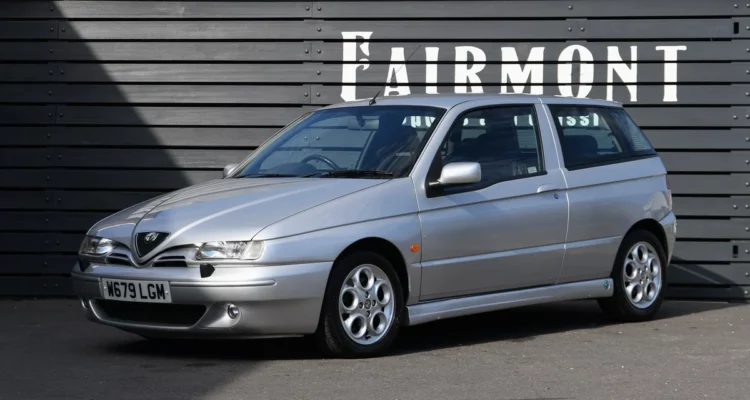Forty Years of quattro – Audi Do that?
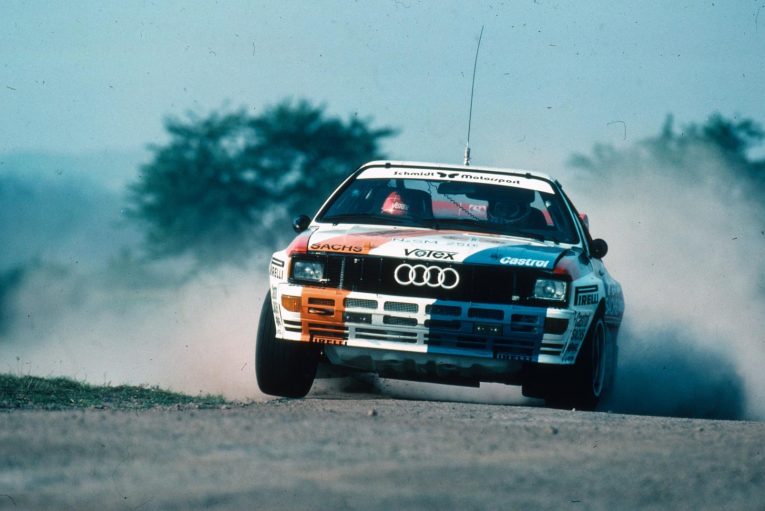
The Audi quattro Coupe of the 1980s is a car that has, quite rightly, earned a massive following. As a road car it was handsome, but thanks to those box arches, also menacing. It was fast thanks to the five-cylinder turbocharged engine with near 200bhp, and of course, it handled like nothing else. And that’s not motoring speak. It truly handled like nothing else because in 1980, nothing else had the drivetrain of the quattro. The drivetrain that earned it that name. Quattro.
In 1980, Land Rovers and Jeeps were four-wheel drive. Cars were not. Why should they be? Cars didn’t need to drive up and over mountains, after all. As such, four, or should we say, all-wheel drive wasn’t deemed a requirement. That’s not to say there hadn’t been attempts. The FF Jensen Interceptor offered all-wheel drive, but it was a clunky, unrefined system. And if you have a poke around Ford’s sheds in Dagenham, you’ll find a Mk1 Capri with all-wheel drive, but again, this was a Ferguson-derived system and wasn’t very good.
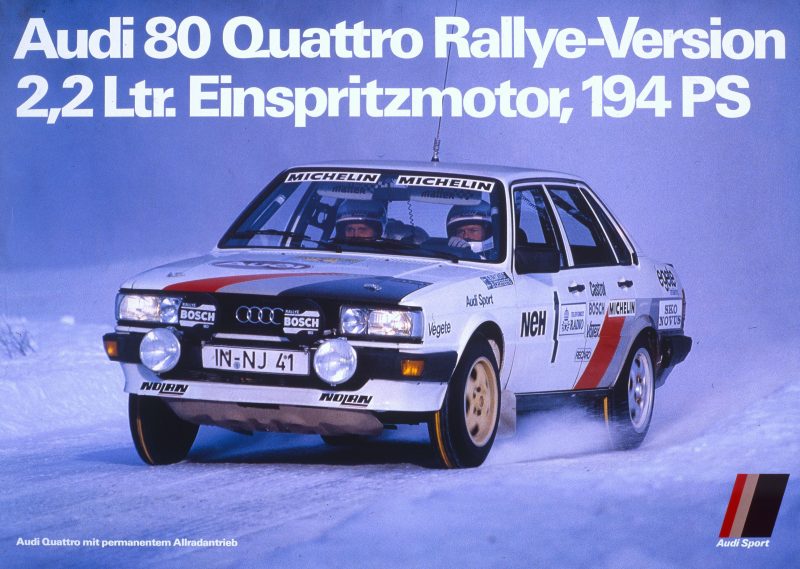
Audi’s system was good though. The engineers didn’t look at all-wheel drive as a thing to wedge into a road car for the sake of it. Instead, they looked at how it could be adapted, improved and refined for road use. Why? Because this would have simply phenomenal potential on one of motorsport’s biggest stages – the World Rally Championship.
The idea for a full-time all-wheel drive system in a road car was actually something that was rattling around the corridors of Audi from as far back as 1977. Audi’s chassis engineer, Jörg Bensinger, first had the idea of an all-wheel drive road car after watching the Volkswagen Iltis outperform pretty much everything else in the snow. This military vehicle was more car than off-roader, and as such, it showed how the technology could be applied. Volkswagen had been building all-wheel drive military vehicles for decades, so it knew what it was doing.
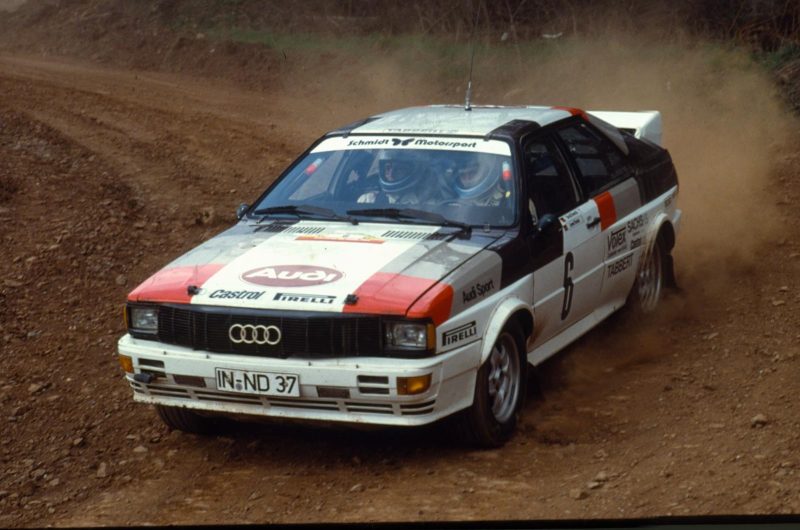
As such, more investigation was carried out and a prototype car based around an Audi 80 was built. And it was that car that proved such a system had real-world potential. It offered grip like nothing else, as well as incredible levels of control. It was, without a doubt, one of motoring’s most significant evolutions. Think about how many modern cars are all-wheel drive. That’s Audi’s doing.
The first-generation quattro cars featured permanent all-wheel drive. The engine, longitudinally mounted, delivered power through a five-speed manual transmission to a centre differential. This differential was manually lockable by the driver via a dash-mounted switch. The rear differential was the same, again with a switch on the dash. The front differential was permanently open.
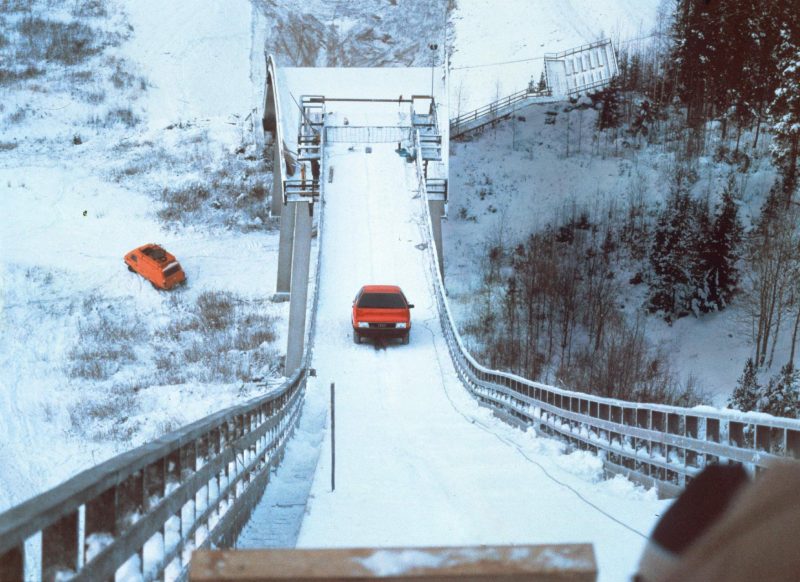
The Audi 100 quattro during the shooting of the famous ‘ski slope’ commercial
In ‘88, this system evolved to include a TorSen centre differential that offered a 50/50 power split between the front and rear. Though each axle could be sent 75% of the engine’s power as and when required.
It was a system based on why Audi and Volkswagen had learned after years of building all-terrain military vehicles. It was also a system the passenger car world wasn’t ready for. There was too much of an association between off-road vehicles and all-wheel drive. Which at their core, are different things. The former is for going where there are no roads, the latter is for excelling where the conditions of a road become difficult. However Audi spun it, it was still going to be a hard sell. So instead, it let the quattro system speak for itself by sticking it under the company’s rally cars.
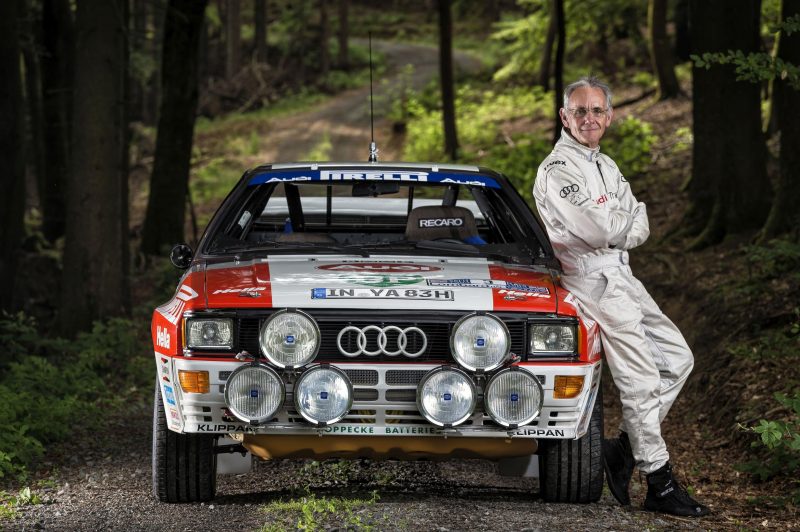
Two-time German Rally Champion Harald Demuth helped develop the quattro, campaigned Group B and 80 versions in the UK and drove an Audi 100 quattro up a snow-covered Finnish ski jump in the famous 1986 Audi television advert.
‘I was driving for Toyota in the German Rally Championship when I had the choice to sign for Audi or Volkswagen for the 1979 season. Volkswagen had an excellent record with the Golf, but Audi had no presence in rallying. However, there was a lot of whispering behind hands that Audi had something special waiting in the bush, as we say.
To gain experience of the sport, Audi began rallying a front-wheel-drive 80. We were telling everyone how good that car was, but what we couldn’t say was that we were developing the quattro, which was just light years ahead of the 80. We tested an early quattro all-wheel-drive system in an 80 bodyshell.
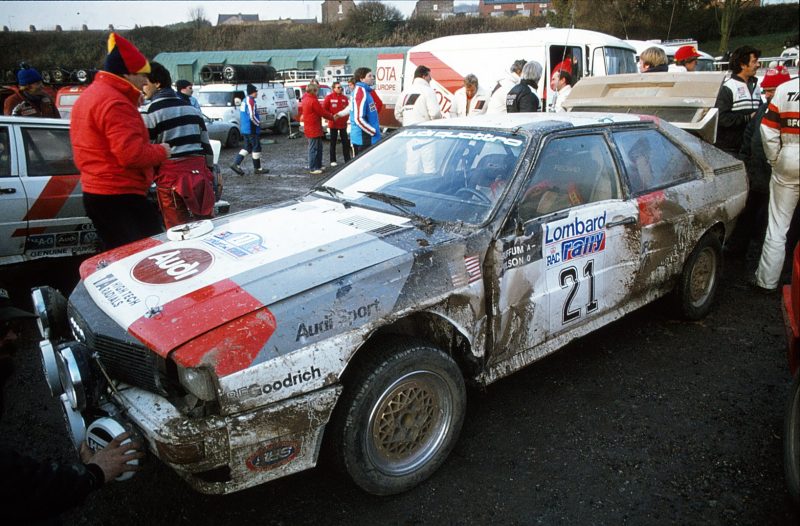
At the 1982 RAC Rally, I was lying behind Hannu Mikkola in a quattro. OK, the gap was quite big, but I was on course to finish second.
Then I had an off on the last day and ended up fifth. David Sutton, who was running the Audi UK rally team, came over and asked me if I would drive for him.
Over the years I drove the Group B quattro and the 80 quattro in the UK. There was a massive difference in the performance, of course. But the handling and the feeling in the corners was very similar thanks to the all-wheel-drive system.
I also won the German Rally Championship twice in a Group B quattro. I called my car Christine – after the Stephen King book and film of the same name about the 1958 Plymouth Fury that just kept rebuilding itself and could never be stopped. I’d spin off the track and go through a ditch, there’d be a big bang, and I’d think, “This is it – I’ve done it this time!” But my quattro would just keep going, and later when I had a look in the service halt, there would only be a little scratch.’
When the Audi quattro arrived in 1980, it made a huge impression on David Ingram, Marketing and Public Relations Exec, who had joined the company two years earlier.
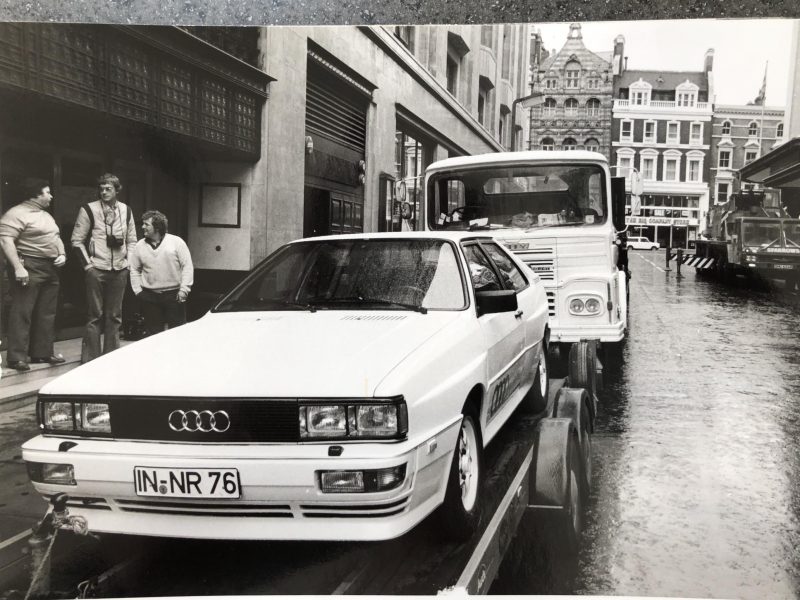
‘I remember first reading about the quattro in the motoring press – this 200-horsepower, turbocharged, five-cylinder, four-wheel-drive coupé – and I thought wow, this sounds like something else. Then I saw the pictures from Geneva – I was too junior at that time to go out to the motor show. However, I was put in charge of supervising the UK launch, which involved hoisting the car 100 feet up in the air to the top of Kensington Roof Gardens in London.
The first time I got to drive the quattro was amazing. The characteristics of that five-cylinder engine as the turbocharger came in, and the burble as you came off the accelerator – it was just so exciting.
And then the rally car arrived. I remember watching it on the 1981 RAC Rally – Hannu Mikkola rolling on the first night and then tearing through the forests to win by 11 minutes. Such powerful images come back to me. The following year, when we started our own Audi UK rally team with David Sutton, was like a dream.
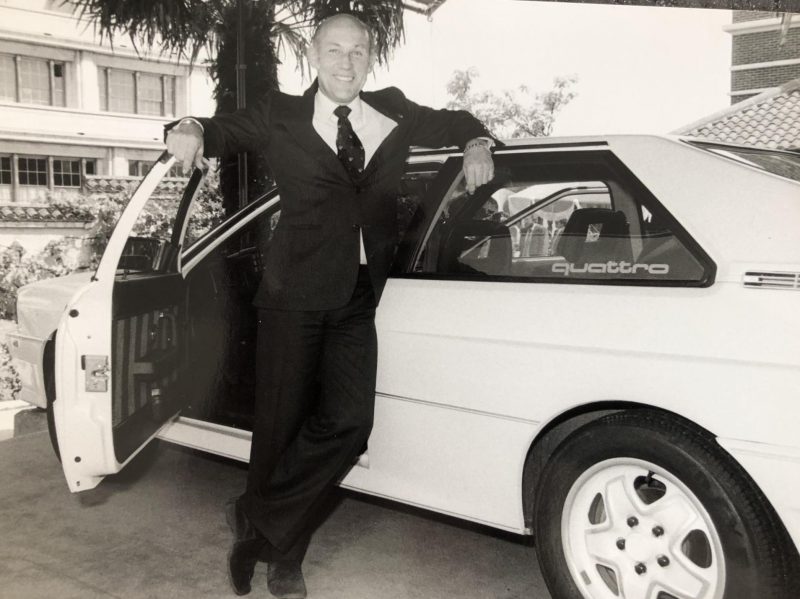
Suddenly I was working with all my heroes, like Stig Blomqvist, who won the British Rally Championship in a quattro in 1982. It makes me misty-eyed now just thinking about those days.
It was a spectacular era for Audi, and it enabled the company to emerge from relative obscurity in the UK. Plus, it coincided with us starting to work with BBH, the Bartle Bogle Hegarty advertising agency, and adopting the Vorsprung durch Technik slogan.
The quattro was an awesome road car and an all-conquering competition car. It was a powerful statement, and there’s no doubt it contributed significantly to making Audi what it is today.’
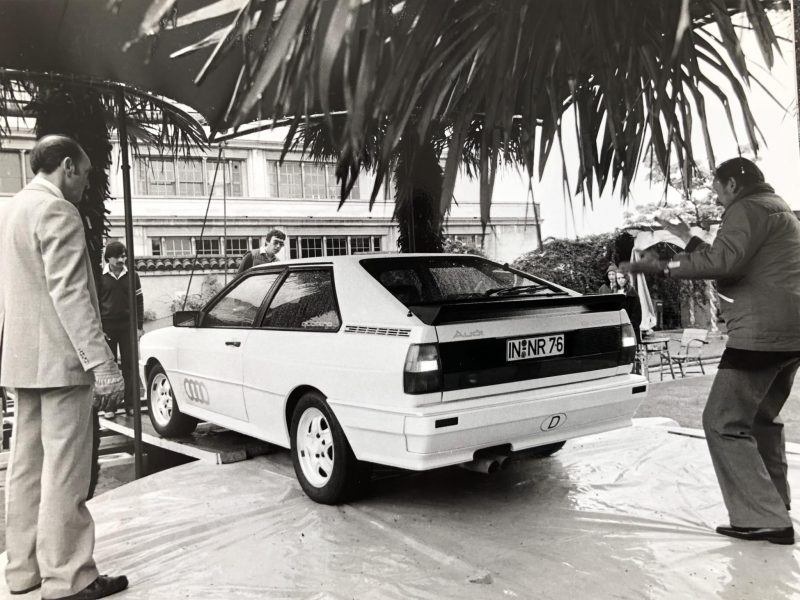
The quattro was, as is evident from the testimonials above, more than just a gimmick to sell cars. It was more than a fad or a quick fix. Instead, it was an idea that would go on to shape the fortunes of Audi as it moved forward. Certainly, the current range of cars all proudly wear the quattro badge, the flagship S and RS models all rely heavily on the now massively developed and technologically advanced system. It is not a function of Audi. No, it is Audi. Because really, can you imagine Audi without quattro?

